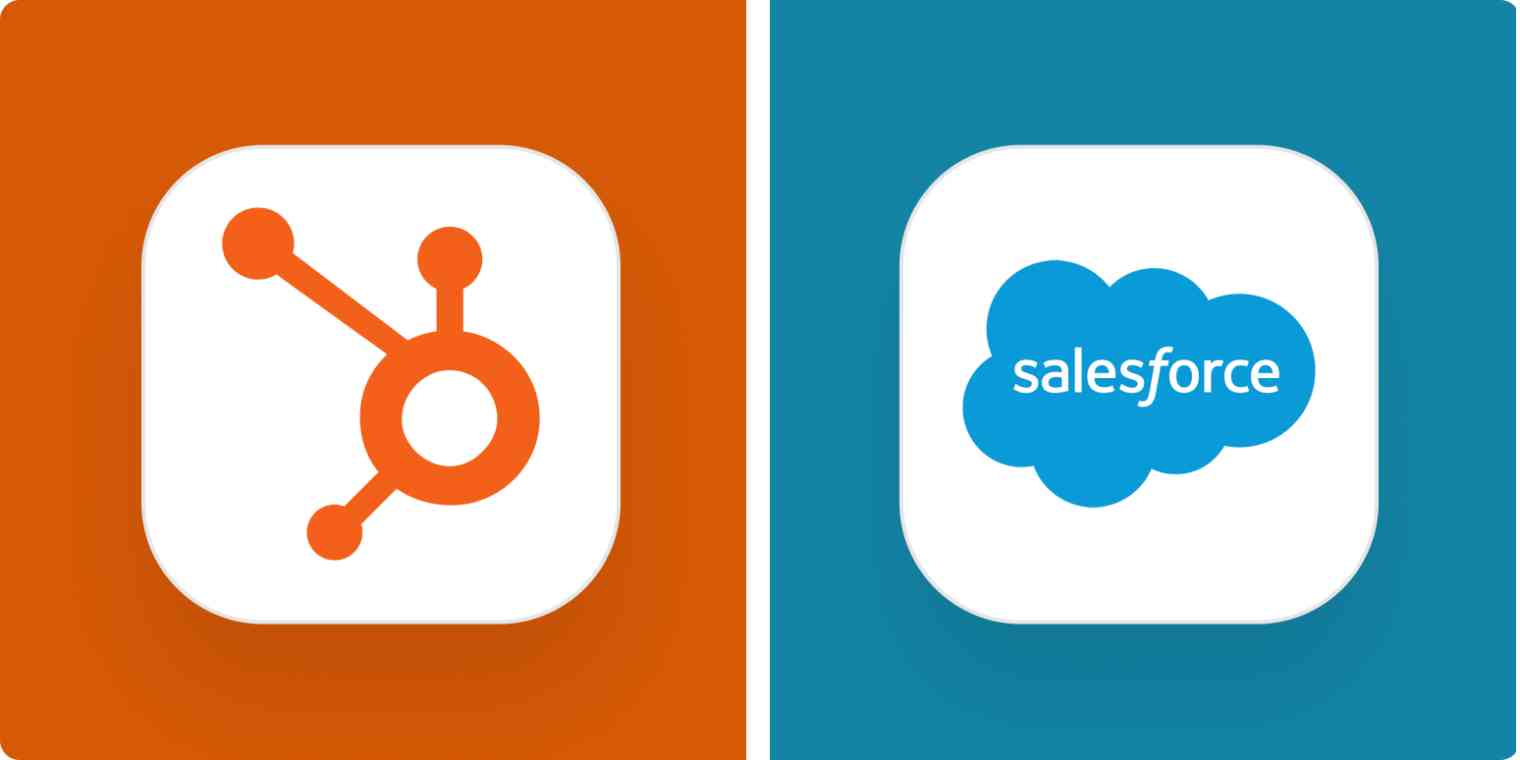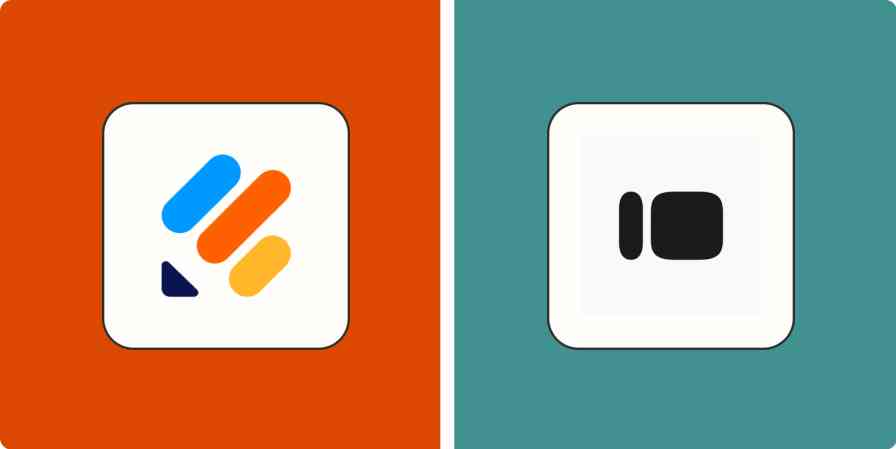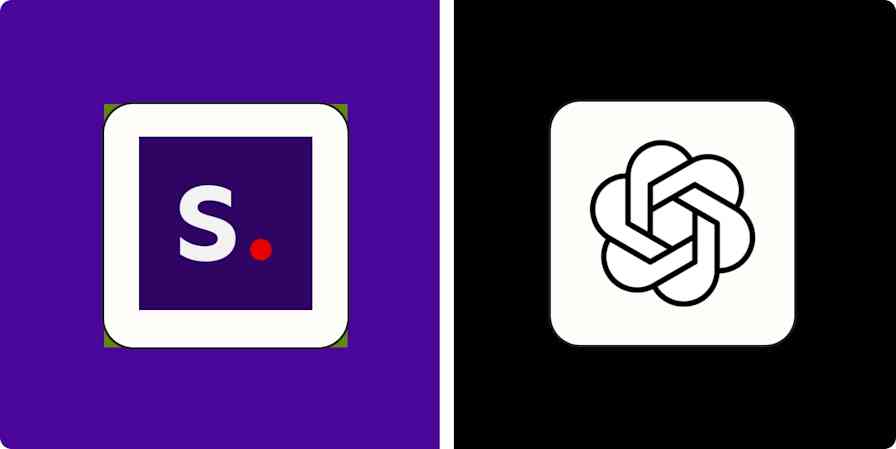Both HubSpot and Salesforce are renowned across industries for their respective arrays of apps. Whether you're trying to organize projects, manage customer relationships, automate marketing funnels, or establish all-in-one digital work ecosystems for multiple teams, both options are more than capable.
So, if you're picking between these two platforms, should you just flip a coin and call it a day? I put both to the test to see how they stack up, so you can see which has the right strengths to fit your needs.
Salesforce vs. HubSpot at a glance
HubSpot started as a marketing tool and grew into a CRM, while Salesforce started as a CRM that's grown its sales and marketing features. Today, HubSpot is still best known as an inbound marketing tool, while Salesforce is known as sales automation software, but they both offer similar sets of features:
CRM
Sales forecasting and analytics
Customer service features
Contact scoring
VoIP
Marketing features
Since Salesforce's offering is much more modular than HubSpot's, to keep things equal, I'll use its Sales Cloud offering as a baseline, which can be amended with additional packages for use cases like support and marketing. I'll walk through more of the core differences between HubSpot and Salesforce in depth in the coming sections, but here's a quick breakdown of how some of their key features compare.
| HubSpot | Salesforce |
|---|---|---|
Sales reporting & forecasting | ⭐⭐⭐⭐ Advanced sales reporting and forecasting, but requires an upgraded paid plan | ⭐⭐⭐⭐⭐ Highly advanced sales reporting and forecasting, with basic reporting available in baseline plans |
Marketing features | ⭐⭐⭐⭐⭐ Extensive marketing features available with the free and Starter plans | ⭐⭐⭐⭐ Extensive marketing automation features available in separate marketing packages |
Ease of use | ⭐⭐⭐⭐⭐ Strong onboarding with step-by-step guidance; more integrated dashboard and navigation | ⭐⭐⭐ Strong onboarding with a demo-like account; layout is initially less intuitive |
Customization | ⭐⭐⭐⭐ Customizable workflows and automation, including JavaScript and Python coding for workflows | ⭐⭐⭐⭐ Highly customizable (including coding capabilities) |
Pricing | ⭐⭐⭐⭐ Extensive free plan, including a free CRM and baseline features; plans include specific product bundles; pricing packages can be customized and scaled by user: Free, Starter ($20/month), Professional ($500/month), Enterprise ($1,500/month) | ⭐⭐⭐⭐ Charges per user per month; many features come as standalone apps accessible by purchase; plans are highly segmented; similar functionality can be much more expensive: Essentials ($25/user/month), Professional ($80/user/month), Enterprise ($165/user/month), Unlimited ($330/user/month), Unlimited+ ($500/user/month) |
AI features | ⭐⭐⭐⭐⭐ Very well-integrated AI features even at lower pricing tiers, including generative AI, predictive analytics, and smart suggestions | ⭐⭐⭐⭐ AI functionality comes from the proprietary Einstein application, which offers generative tools, workflow automation, predictive analytics, and smart insights; isn't as conveniently integrated; scales features by plan |
The biggest differences between the two are their pricing models, interfaces, and the availability of features. Picking the right one will really come down to an understanding of your team's needs.
Salesforce has the edge on sales reporting and forecasting
Salesforce's sales reporting and forecasting features are more readily built into its platform, making it the better option for users looking specifically for this functionality. While forecasting is a second-tier feature for both platforms, it's cheaper on Salesforce on a per-user basis.
HubSpot's dashboards are powerful, but the Salesforce standard dashboard is a little more accessible as your CRM home base, showing you your entire pipeline at a glance, along with personalized widgets for tasks, opportunities, and leads.
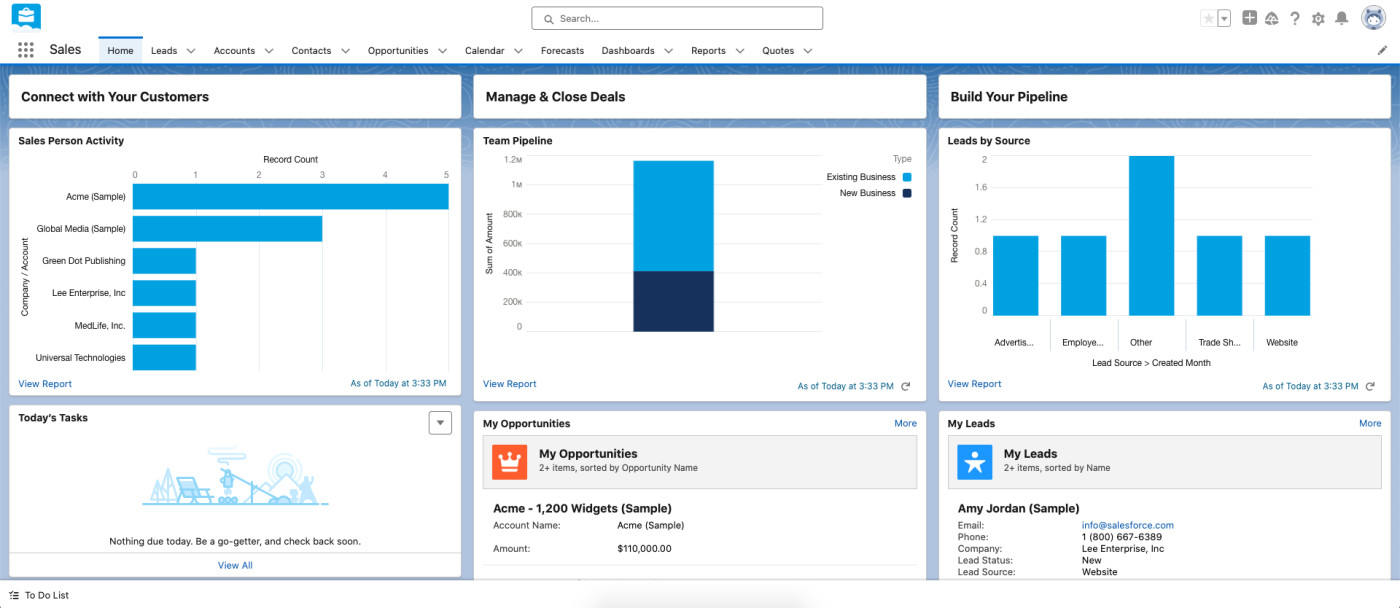
When assessing current leads, you can set details like the anticipated close date, the stage of the funnel that they're in (and their history), the amount that you plan on closing on, and the probability of closing.

When combined with a well-trained sales team, Salesforce's contact scoring tools (which look at different customer fit criteria to assess a lead's quality) are known to be pretty accurate when estimating the probability of conversion.
HubSpot's no slouch when it comes to forecasting and reporting, either. If you've got a second-tier plan or above, their custom report creation feature is extremely useful and user-friendly for creating reports on the fly while seeing them get built out in real time.
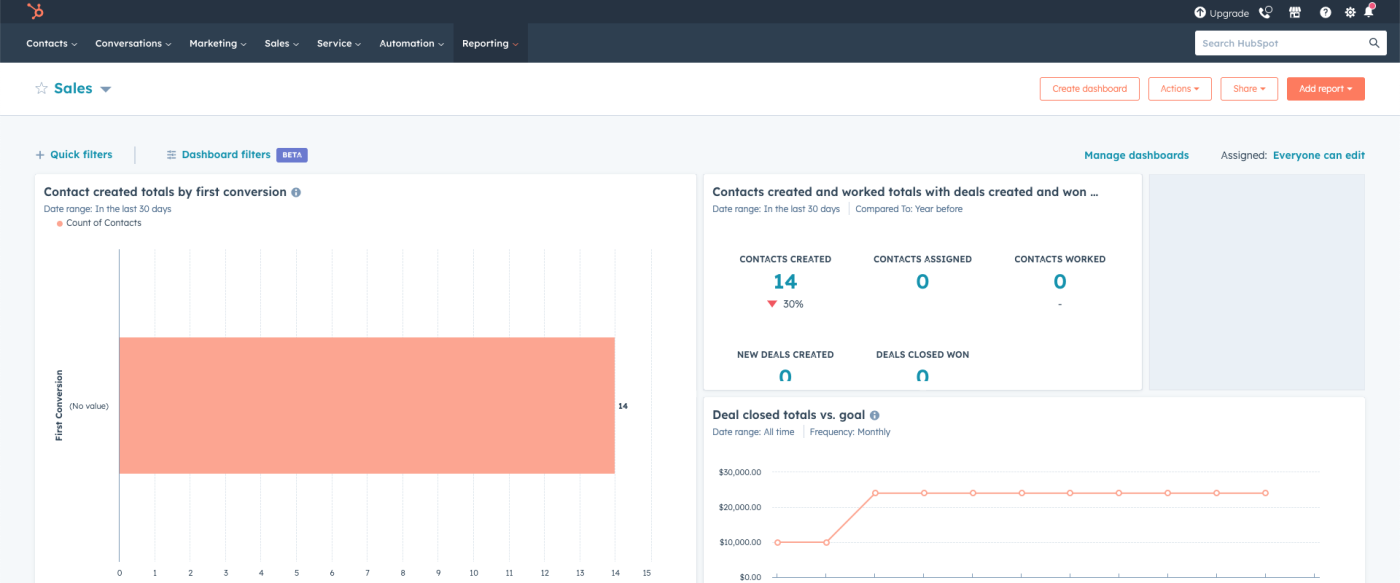
HubSpot's reporting also looks more modern than Salesforce's, but Salesforce gets a slight edge here because of its actual ingrained utility. For those who want straightforward reporting and sales overviews with detailed forecasting, both are definitely usable, but Salesforce just comes out on top.
HubSpot has more well-rounded marketing features for more plans
For brands who want an all-in-one sales and marketing tool, HubSpot's plans have more well-rounded marketing features that get the job done. And, unlike Salesforce, these features come in product bundles instead of as separate plan packages or individually priced apps.
For example, HubSpot offers pay-per-click (PPC) ad management that allows accounts to create and manage PPC ads from within HubSpot. This kind of inclusive functionality across applications is a big plus for businesses looking to manage and execute a wide range of tasks within one platform.
Other examples of HubSpot's marketing features include:
Page optimization suggestions
Email templates
Marketing automation features based on triggered actions
The ability to manage and publish to social media accounts
Website and webpage builder
Blogging with AI assistance
Automatic site-wide SEO recommendations
Website performance analysis and topic suggestions via Google Search Console integration
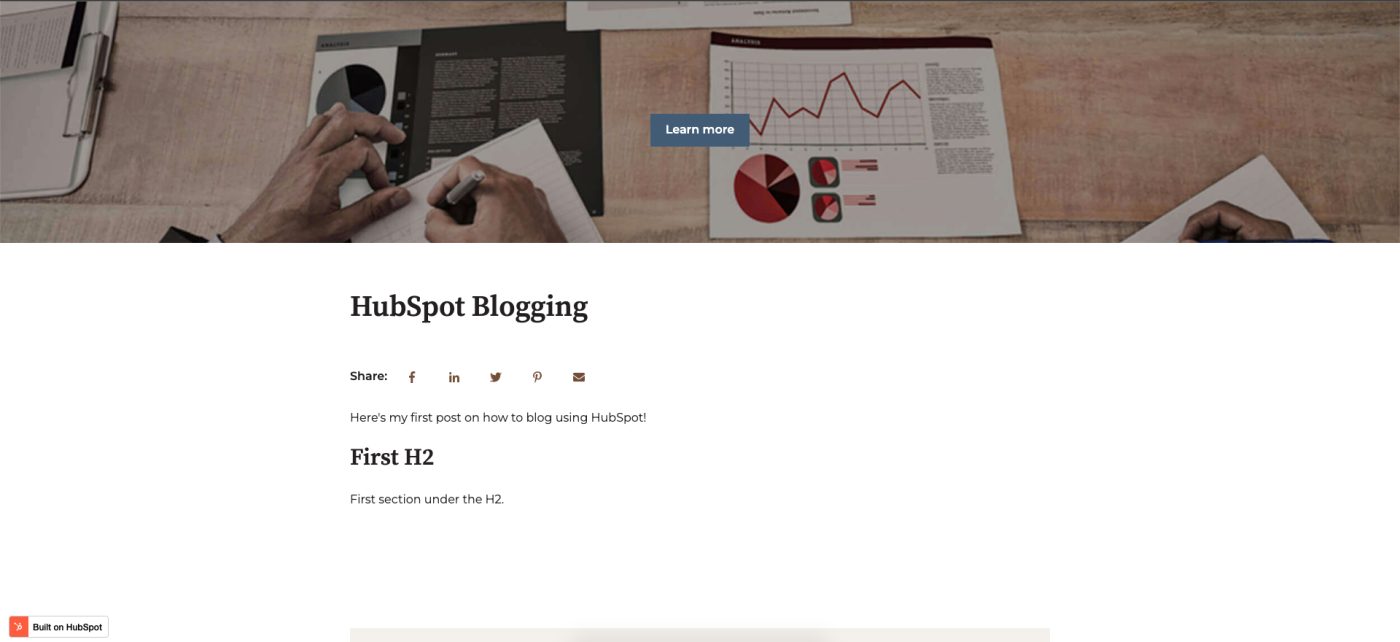
To be clear, Salesforce's marketing features are also quite extensive and include email automation, lead nurturing, AI capabilities (more on that later), competitor monitoring, site page creation, and more. (Starting to see how competitive these two tools are?)
In Salesforce, marketing packages are priced separately from the CRM with the lowest tier starting at $1,250 per month for up to 10,000 contacts. Salesforce, overall, may prove unaffordable and inaccessible to businesses with tight budgets looking for a CRM that plays fast and loose with its marketing features. But for larger teams, their pricing model could still be comparable to—or even more affordable than—HubSpot's.
Salesforce's AI is more robust, but HubSpot's AI is easier to use
With so many separate AI productivity tools hitting the market over recent years, it can be tough to keep up with the best ones and integrate them into your workflows. Fortunately, Salesforce and HubSpot have been all-in on AI for a while now, and both have some of the best-integrated AI features that can save users from having to deploy a bunch of separate tools.
Salesforce's proprietary AI engine—aptly named Einstein—is available with features scaled by price plan or as a separate add-on. Einstein has many of the usual AI marketing features, like text generation, forecasting, assistive bot deployment, conversational bot creation, and workflow automation. It's also got a handy prediction builder to create custom forecasts based on your Salesforce data.

Even for HubSpot's free users, generative AI is built right into many of the features, including the CMS hub, meaning you can remix human-written copy or generate original copy directly to your website, landing pages, or blog.
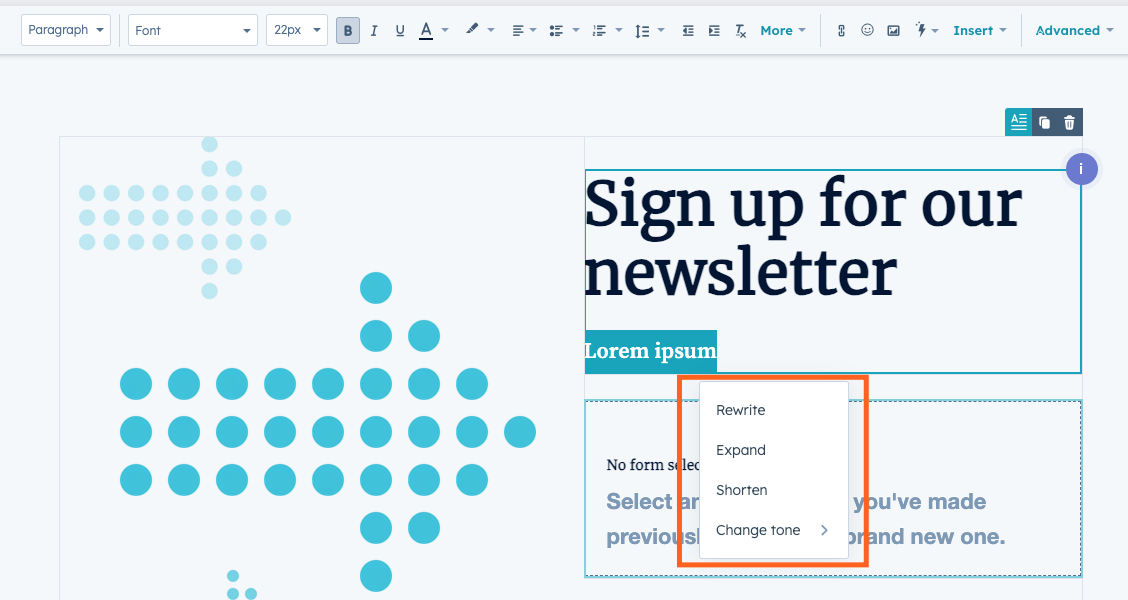
As you peruse the HubSpot interface, you'll see prompts for interacting with an integrated AI chatbot that can suggest workflow enhancements, provide data-based insights, and dive into predictive analytics. Overall, HubSpot's AI is really effectively woven into the platform, making it incredibly easy to put to work.
While both platforms' AI have similar functionality, Salesforce's is a bit more complex and customizable. But HubSpot's is simpler and better integrated into its platform, so I give it a slight edge in the AI category.
Both HubSpot and Salesforce provide great onboarding
Both platforms have great onboarding processes and walkthroughs. HubSpot holds your hand from the moment you log in, starting you with a series of milestones guides and displaying what tasks you need to complete to get started. Salesforce has a more hands-off approach, with pop-ups offering to walk you through the process and quick demos as you explore features. It also has a handy help dropdown in the top nav, giving you resources specific to the page you're currently working on.

For users who are new to HubSpot, the onboarding is a pretty nice perk. It's more detailed, dynamic, and intuitive than Salesforce's. Since the dashboard's layout is also really easy to navigate, you can start using it right out of the box without a huge learning curve.
Even though Salesforce has a strong onboarding experience, it's a little more challenging to learn because of how it divides the dashboard and its features. Rather than just heading to a Sales, Marketing, or Contact hub in the nav to find a relevant action, you have to search for individual apps by name. That means you have to learn what apps you need to execute which actions if they don't fall neatly into some of their featured categories. Plus, not all apps may be available for your plan, so there's a pretty good amount of friction working against new users.
Since many of HubSpot's apps and features are built right into the platform, the layout is really clean and simple to navigate. Features are separated into essential categories, and if they aren't available for your plan, there's a clear icon that tells you you need to upgrade to use it.
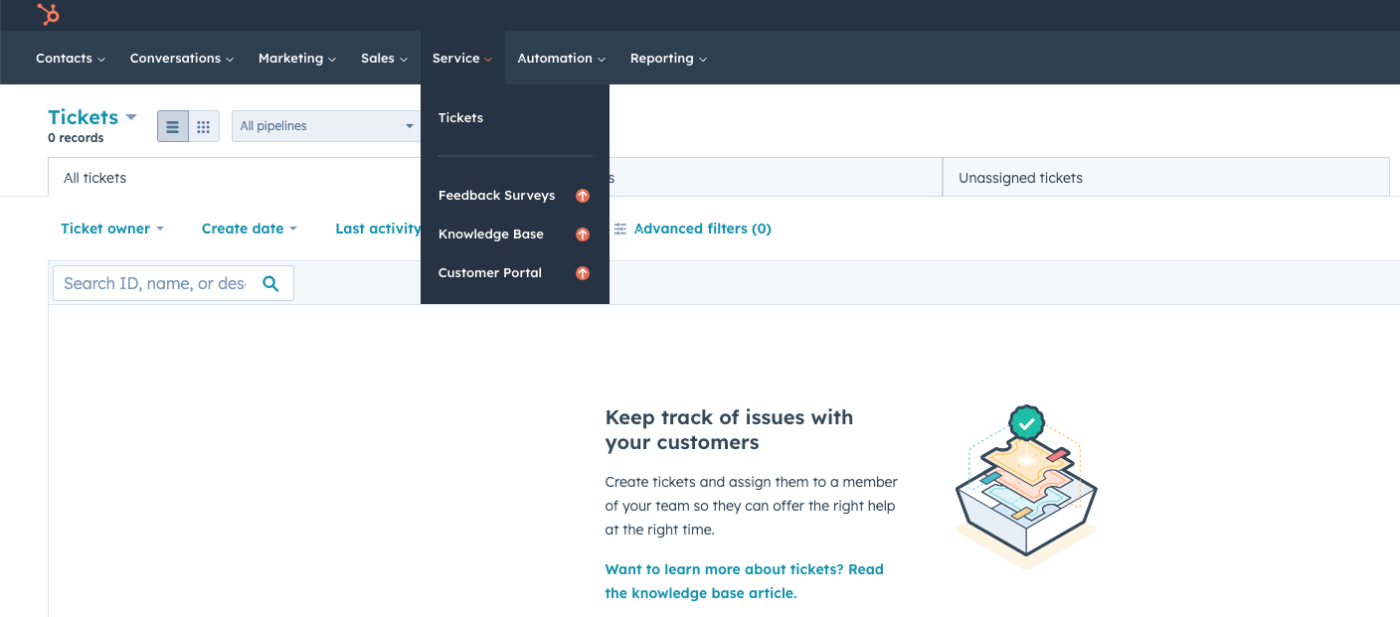
Whichever platform you choose, rest assured that you'll be able to get set up easily. But if easy onboarding is important to you and your team, HubSpot's the clear winner.
Salesforce is more customizable
Salesforce is the winner when it comes to customization. Not only can you add specific new features with standalone apps, allowing you to mix and match additional tools, but you can also access custom coding, so you can customize basically anything you want. This can be a must-have for companies that operate at a massive scale with complex or very specific business processes. To make coding even more accessible, Salesforce launched the Code Builder beta this year, allowing users to develop from anywhere without any additional software.
Most individual HubSpot features come with a pretty high degree of customizability, like from-scratch and templated workflow, report, and task creation. HubSpot also has a GitHub integration, which allows project code storage and GitHub tool functionality. The HubSpot CMS is also pretty functional for creating custom webpages, blogs, forms, and even basic apps. And while HubSpot does allow JavaScript and Python coding for customizing workflows, Salesforce's coding capabilities are more robust.
Salesforce has access to more apps, but HubSpot's app hub offers a cleaner experience
When it comes to apps and integrations, the award for sheer volume goes to Salesforce. Through App Exchange, users can access thousands of third-party and native apps like Salesforce Adoption Dashboards, DocuSign, Conga Composer, Mailchimp, and Aircall CTI. The exchange's interface is a little clunky, but it's hard to fault Salesforce much for that since it gets the job done.

HubSpot's App Marketplace doesn't offer as many apps, but the experience feels much more curated and user-friendly. HubSpot built many of the app integrations, so you can be sure you'll have seamless utility. The app pages themselves are super detailed with feature highlights, clear pricing packages, and utility roadmaps that show you which features the apps integrate with.
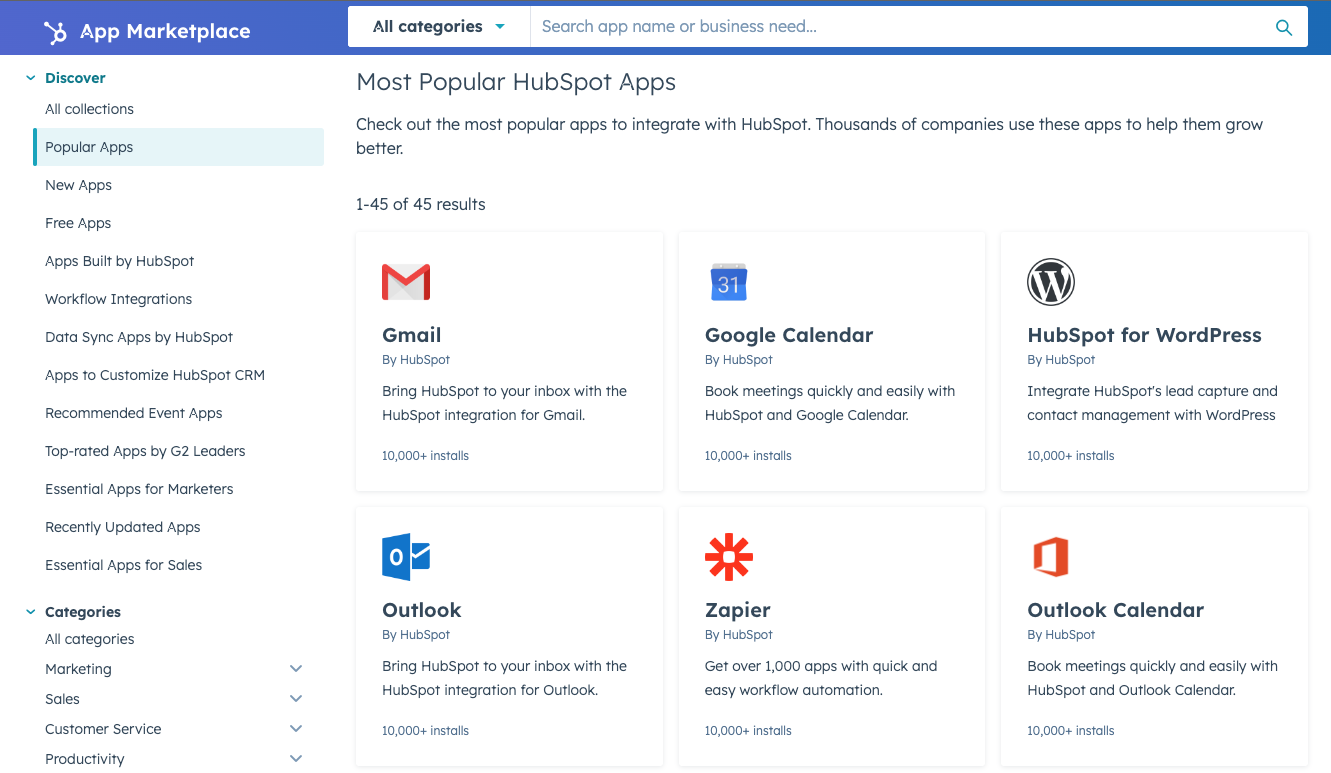
You can expect to find the vast majority of common apps on either option. But if you depend on more niche apps, it's worth checking each marketplace to make sure they're available.
Both apps also integrate with Zapier, which opens them up to thousands more integrations. Learn more about how to automate business processes in HubSpot and how to use Salesforce automation to keep your business on track. Or take a look at these ideas to help you connect each CRM to the rest of your tech stack to automate all your critical workflows.
Create Salesforce leads with new Gravity Forms submissions
Add new Facebook Lead Ads leads as leads in Salesforce
Add new Salesforce leads to Google Ads customer lists with emails
Add new HubSpot contacts to Google Ads customer lists
Zapier is the leader in workflow automation—integrating with 6,000+ apps from partners like Google, Salesforce, and Microsoft. Use interfaces, data tables, and logic to build secure, automated systems for your business-critical workflows across your organization's technology stack. Learn more.
Salesforce vs. HubSpot pricing: Apples and oranges
If you're really torn between the two products, the easiest way to differentiate between HubSpot and Salesforce is by looking at their pricing structures. The number of users and the features you value most will play pretty heavily into the package you need, which can vary widely from one brand to the other.
Since both of them have quite a few different packages, I'll specifically compare HubSpot's Sales Hub to Salesforce's Sales Cloud, which are more similar than most of their other offerings.
Salesforce Sales Cloud pricing structure
No free plan or features. There is a free trial if you want to test it out.
Essentials, $25/month/user: The baseline offering gives you basics like email integration, account/contact management, custom sales processes, custom reports and dashboards, and AI-powered activity logging.
Professional, $80/month/user: This tier adds forecasting, quote and sales order tracking, unlimited custom applications, and contract management.
Enterprise, $165/month/user: At this level, you get workflow automation, sales console apps, dedicated sales teams, pipeline inspection, territory management, opportunity scoring, and advanced reporting capabilities.
Unlimited, $330/month/user: At this tier, you'll get everything mentioned above, plus a premier success plan, lead scoring, conversation insights, the Developer Pro Sandbox, and (the real kicker) the full suite of Einstein functionality for predictive and generative AI.
Unlimited+, $500/month/user: This even-more-ultimate tier is the most premium plan available. On top of the Ultimate features, you also get performance management, team collaboration with Slack, unlimited knowledge access, and Salesforce's premium tech stack consolidation.
Salesforce also allows you to pay separate fees for select features, so if there's just one key capability available at the tier above the one you're looking at, you can potentially add it on.
HubSpot Sales Hub pricing structure
Free plan: Not technically part of any hub, this includes key features like a CRM, live chat, conversational bots, email marketing, landing page creation, customer service ticketing, and more. HubSpot branding is included.
Starter, $20/month: This starts with two users and scales up by the number of users. It'll remove HubSpot branding and add features like conversation routing, task queues, goals, automation, and chat support.
Professional, $500/month: This tier starts with five users and scales up per user from there. With Professional, you also get bonuses like sales analytics, CRM interface configuration, forecasting, video messaging, and additional automation.
Enterprise, $1,500/month: This tier scales up starting at 10 users per month. Enterprise access gives you custom objects, sandboxes, advanced permissions, conversation intelligence, and predictive lead scoring.
HubSpot vs. Salesforce: Which is best for you?
At the end of the day, HubSpot and Salesforce offer a lot of the same CRM, sales, and marketing resource management tools—they just bundle them in different packages. To summarize their differences succinctly:
Salesforce has an edge when it comes to reporting and customization.
HubSpot has less of a learning curve, boasts a superior interface, and offers better-rounded marketing and sales tools at an accessible price point (not to mention a free tier).
If you're considering changing from one to the other, it's worth noting that due to Salesforce's customization features and complexity, Reddit users have pointed out that migrating from HubSpot to Salesforce is much more cumbersome than the other way around. If you're picking one to start with, since both options offer many similar things, the best place to start is to make an inventory of price-affecting factors like must-have features, number of contacts, and number of users. That'll help you get an idea of the price package you'll need.
If you decide to use both tools—supplementing Salesforce's CRM and sales capabilities with HubSpot's free marketing tools, for example—you can set up a HubSpot Salesforce integration with Zapier to do things like create new Salesforce leads whenever someone submits a HubSpot form.
Related reading:
This article was originally published in 2019 and has had contributions from David Harrington and Ana Gotter. The most recent update was in December 2023.
